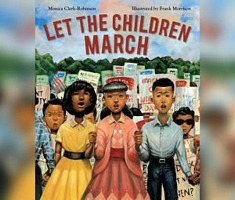


It’s hard to argue with success, but guides that actually do the math will be more useful to budding capitalists. Daymond is Black most of the cast are people of color. (In a closing summation, the author also suggests investing in stocks, bonds, or cryptocurrency.) Though Miles cranks up the visual energy in her sparsely detailed illustrations by incorporating bright colors and lots of greenbacks, the actual advice feels a bit vague. The enterprising entrepreneur reimburses himself for the shirts and splits the remaining proceeds, which leaves him with enough for that poster as well as a “brand-new business book,” while his friends express other fiscal strategies: saving their share, spending it all on new art supplies, or donating part and buying a (math) book with the rest. Then he recruits three friends to decorate them with his design and help sell them for an unspecified amount (from a conveniently free and empty street-fair booth) until they’re gone. Having only half of the $10 he needs for a Minka J poster, Daymond forks over $1 to buy a plain T-shirt, paints a picture of the pop star on it, sells it for $5, and uses all of his cash to buy nine more shirts. John, founder of the FUBU fashion line and a Shark Tank venture capitalist, offers a self-referential blueprint for financial success. How to raise money for a coveted poster: put your friends to work! (timeline, afterword, artist’s statement, quote sources, bibliography) While the children win the day, such details as the Confederate flag subtly connect the struggle to the current day.Ī powerful retrospective glimpse at a key event. The child crusaders, regardless of how badly they’re treated, never lose their dignity, which the art conveys flawlessly. Morrison’s powerful use of perspective makes his beautiful oil paintings even more dynamic and conveys the intensity of the situations depicted, including the children’s being arrested, hosed, and jailed. They will lead the way // The path may be long and / troubled, but I’m gonna walk on!”) are placed within the illustrations in bold swoops for emphasis. The narrative succinctly explains why the Children’s Crusade was a necessary logistical move, one that children and parents made with careful consideration and despite fear. comes to speak at her church, a girl and her brother volunteer to march in their parents’ stead.

Morrison’s signature style depicts each black child throughout the book as a distinct individual on the endpapers, children hold signs that collectively create a “Civil Rights and the Children’s Crusade” timeline, placing the events of the book in the context of the greater movement. A vibrantly illustrated account of the Birmingham Children’s Crusade through the eyes of a young girl who volunteers to participate.


 0 kommentar(er)
0 kommentar(er)
